Have you ever wondered how long you can keep rice in a rice cooker without compromising its quality and safety? Proper storage and handling of rice are crucial to maintain its freshness and flavor, especially if you frequently cook rice in a rice cooker.
In this article, we will explore the maximum duration for storing rice in a rice cooker and provide tips for preserving its quality and safety, ensuring that your rice is always fresh and delicious.
Key Takeaways:
- Proper storage and handling of rice in a rice cooker are crucial for maintaining its freshness and safety.
- Factors that affect rice storage duration in a rice cooker include type of rice, temperature, humidity, and storage container.
- Regular maintenance and cleaning of a rice cooker are important for optimal storage outcomes.
Understanding Rice Storage Duration in a Rice Cooker
When it comes to storing rice in a rice cooker, it’s important to understand the maximum duration you can keep it to maintain its safety and quality. The duration varies depending on several factors, such as the type of rice, the storage temperature, and the moisture level.
Generally, uncooked rice can last up to six months when stored in a cool and dry place, away from sunlight and moisture. However, when stored in a rice cooker, the duration is shorter and depends on the type of rice as well as the storage conditions.
Rice storage duration in rice cooker:
| Rice Type | Storage Duration |
|---|---|
| White Rice | Up to 24 hours |
| Brown Rice | Up to 12 hours |
| Sushi Rice | Up to 8 hours |
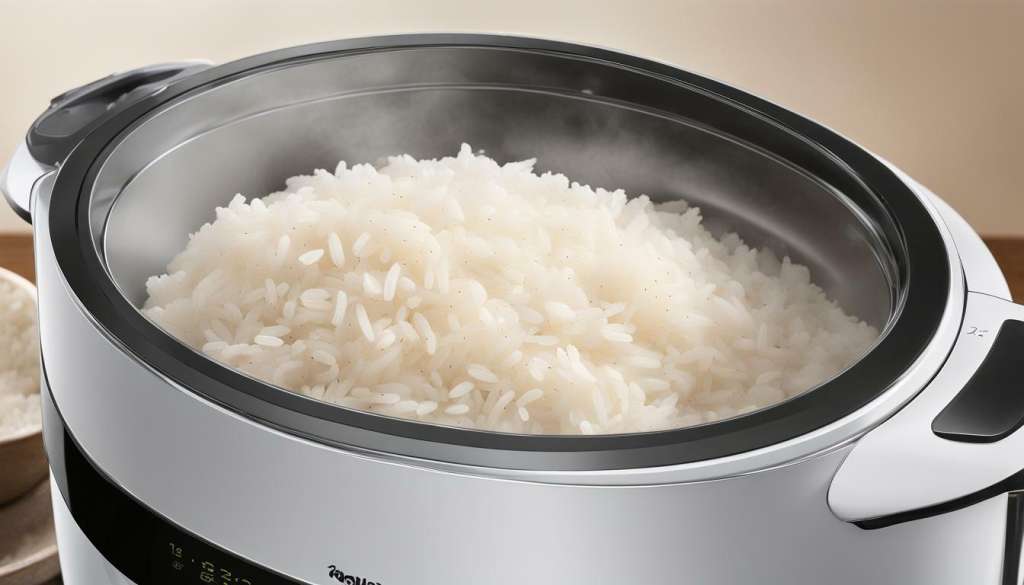
It’s crucial to note that once the storage duration has passed, the rice may begin to spoil, affecting its texture, flavor, and nutritional value. Therefore, it’s best to consume the rice within the recommended period or store it in the fridge or freezer if you wish to keep it for longer.
To ensure maximum rice preservation in a rice cooker, maintain a consistent temperature between 140-165°F (60-74°C), which is the optimal range for rice storage. Additionally, keep the rice cooker clean and dry, as moisture and bacteria can cause the rice to spoil faster.
By following these tips and understanding the factors that affect rice storage duration in a rice cooker, you can enjoy safe and delicious rice meals every time.
Ensuring Freshness: Tips for Keeping Rice Fresh in a Rice Cooker
Storing rice in a rice cooker can be convenient, but it’s important to know how to maintain its freshness. Follow these tips to keep your rice cooker performing optimally and your rice fresh for longer:
Control the Temperature
The ideal temperature for rice storage is below 40°F (4°C). Keep your rice cooker in a cool, dry place away from sunlight and other heat sources. Avoid opening the lid too frequently as this can cause fluctuations in temperature and humidity levels, which can compromise the freshness of the rice.
Use Airtight Containers
Airtight containers help to keep moisture, insects, and other contaminants away from the rice. Place the rice in a clean and dry container with a tight-fitting lid before storing it in the rice cooker. Avoid using containers made of porous materials like plastic or wood.
Store Rice for Shorter Durations
To ensure maximum freshness, keep rice in the rice cooker for no longer than 2-3 days. If you need to store it for longer periods, transfer the rice to a freezer-safe container and freeze it. Freezing rice can extend its shelf life to up to six months.
Regularly Clean and Maintain Your Rice Cooker
Cleaning your rice cooker regularly can help to prevent the buildup of bacteria and other contaminants, which can negatively impact the quality of the rice. After each use, clean the rice cooker thoroughly with soap and water, and dry it completely before storing rice in it again. Check the manufacturer’s instructions for specific care guidelines.
Follow these tips to maximize the shelf life of rice stored in your rice cooker and ensure that you and your family always enjoy fresh and delicious rice.
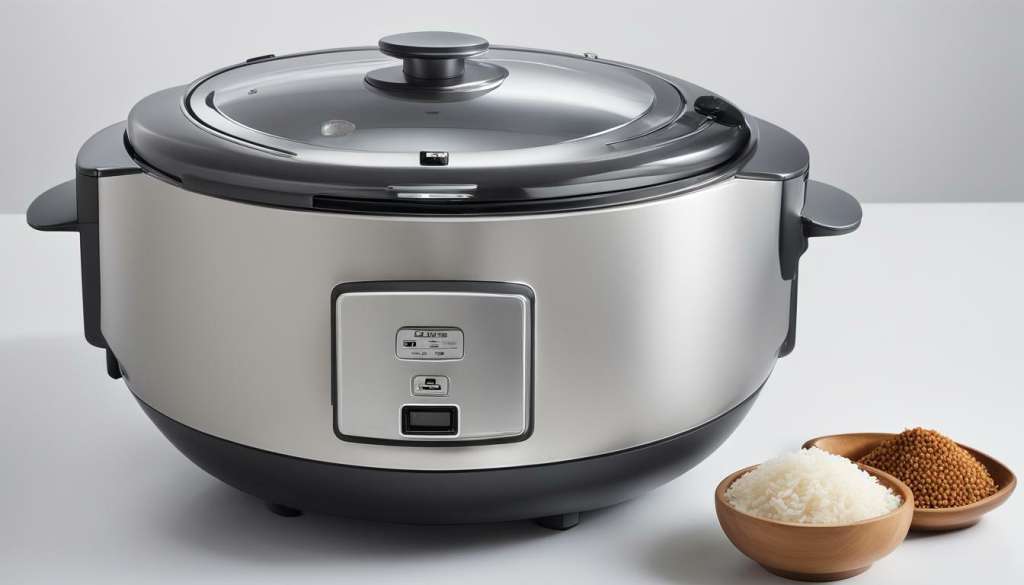
Storing Cooked Rice in a Rice Cooker
Storing cooked rice in a rice cooker is a convenient and practical way to keep leftovers for future meals. However, it is crucial to follow the recommended guidelines and ensure proper handling to avoid foodborne illness and maintain optimal flavor.
The general rule of thumb for storing cooked rice in a rice cooker is to keep it for no longer than 24 hours. After this time, the rice may be unsafe for consumption due to potential bacterial growth. It is essential to store rice in airtight containers and refrigerate it promptly to slow the growth of bacteria.
| Type of Rice | Maximum Storage Time |
|---|---|
| White Rice | Up to 3 days |
| Brown Rice | Up to 5 days |
| Wild Rice | Up to 7 days |
It is important to reheat rice thoroughly before consumption, ensuring the internal temperature reaches at least 165°F (74°C) to kill any potential bacteria. It is not recommended to reheat rice more than once, as this can increase the risk of contamination.
Proper handling and storage of cooked rice in a rice cooker can extend its shelf life while maintaining its safety and quality. By following these guidelines and tips, you can enjoy delicious rice dishes with peace of mind.
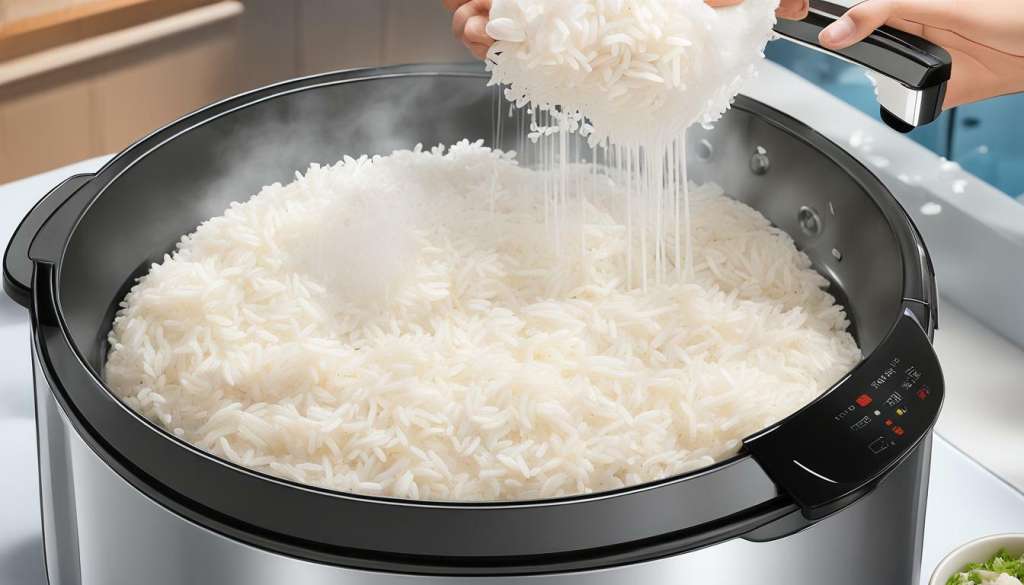
Maximum Rice Storage Time in a Rice Cooker
Storing rice in a rice cooker is a handy way to keep it warm and ready to eat. However, it’s important to note that rice can only be stored in a rice cooker for a limited period. The maximum rice storage time in a rice cooker varies depending on the type of rice you are using.
White rice, for instance, can be stored in a rice cooker for up to 12 hours. Brown rice, on the other hand, has a shorter storage time of around 8 hours.
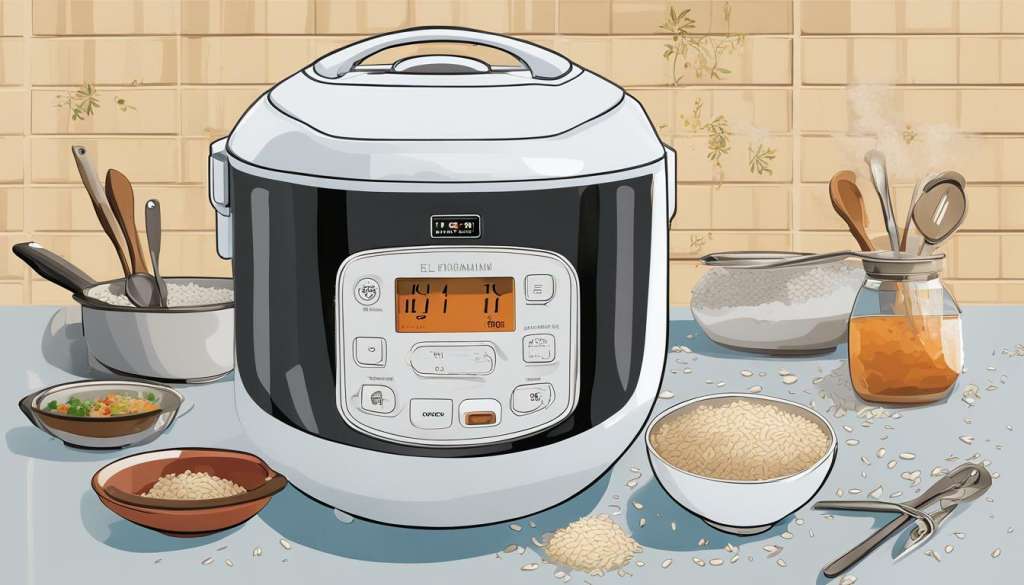
It’s essential to follow these guidelines to prevent the growth of harmful bacteria that can lead to food poisoning. Moreover, the storage time can also affect the quality and texture of the rice.
It’s worth noting that the maximum storage time of rice in a rice cooker may vary depending on the model and brand. Therefore, it’s crucial to read the manufacturer’s instructions for specific storage recommendations.
The Importance of Rice Cooker Maintenance for Successful Storage
Proper maintenance of your rice cooker is crucial for ensuring successful rice storage. By regularly cleaning your rice cooker, you can prevent the buildup of bacteria and mold, which can affect the safety and quality of your rice.
To start, make sure to unplug your rice cooker and let it cool down before cleaning. Remove any remaining rice or debris from the inner pot, and wash it with warm, soapy water. Do not use abrasive materials or harsh chemicals, as they can damage the non-stick coating of the pot. You can also use a mix of vinegar and water to clean the pot thoroughly. Rinse the pot with clean water and dry it before placing it back into the rice cooker.
In addition to cleaning, it’s important to inspect your rice cooker for any damages or wear and tear. Check the power cord and plug for any cracks or damages, and ensure that the heating plate is functioning correctly. If you notice any issues, do not use the rice cooker until it has been repaired or replaced.
Regular maintenance of your rice cooker will help extend its lifespan and ensure that your rice stays fresh and safe to consume. Follow these simple maintenance tips to maximize your rice cooker’s performance and storage capabilities.
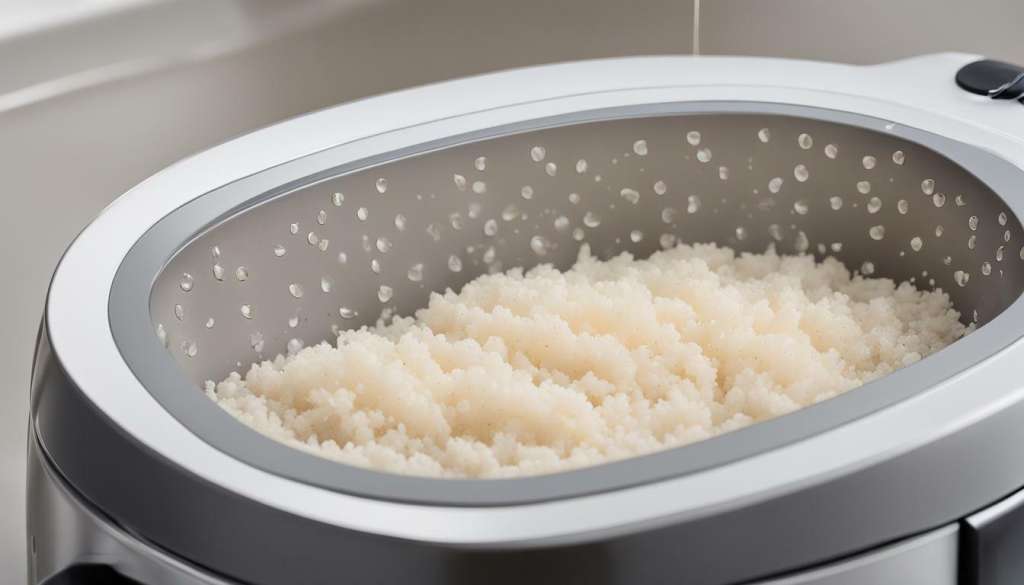
Understanding the Signs of Spoiled Rice in a Rice Cooker
Despite proper storage, rice in a rice cooker can still spoil if it is not handled correctly. Therefore, it is essential to know the signs of spoiled rice to avoid consuming unsafe food.
One of the primary indicators of spoiled rice in a rice cooker is a change in texture. Spoiled rice tends to become clumpy and sticky, with a mushy consistency. Additionally, the color of the rice may appear off, with a yellow or brownish tint instead of the usual white or brown. The aroma of spoiled rice may also be unpleasant, with a musty or sour smell.
If you notice any of these signs, it is best to err on the side of caution and dispose of the rice immediately, as consuming spoiled rice can pose health risks such as food poisoning. To prevent spoilage, be sure to store rice at the proper temperature and duration, and avoid exposing it to moisture and air.
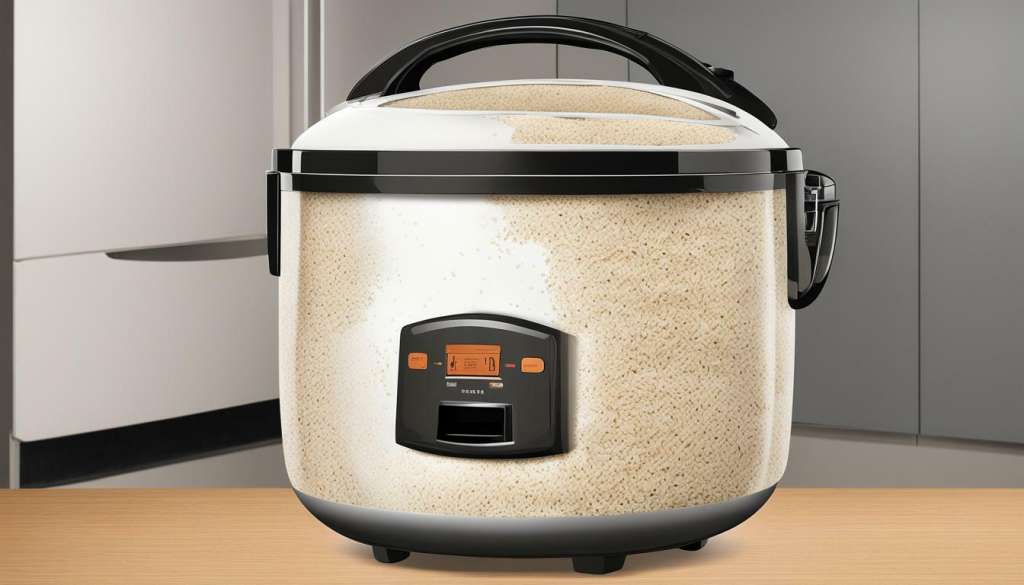
Regularly cleaning and maintaining your rice cooker can also help prevent the growth of bacteria and mold that can contribute to spoilage. By staying vigilant and aware of the signs of spoiled rice, you can ensure the quality and safety of your rice dishes.
Proper Disposal of Rice in a Rice Cooker
While properly storing rice in a rice cooker is important, it’s equally important to understand the proper way to dispose of rice when it is no longer safe for consumption. As with any food item, spoiled rice can cause illness if ingested.
The first step in disposing of rice in a rice cooker is to unplug the unit and allow it to cool completely. Once the rice cooker is cool, empty any remaining rice into a trash bag or compost bin.
If the rice in the rice cooker has gone bad, it’s best to throw out the entire batch, including any remaining rice in the cooker. Do not attempt to salvage any of the rice, as it may have already been contaminated.
When disposing of rice, it’s important to follow proper waste management practices. This includes placing the rice in a sealed container or bag and disposing of it in the trash. Avoid flushing rice down the toilet or disposing of it in the sink, as this can lead to plumbing issues and clogs.
By properly disposing of spoiled rice, you can help reduce food waste and prevent potential health risks to yourself and others.
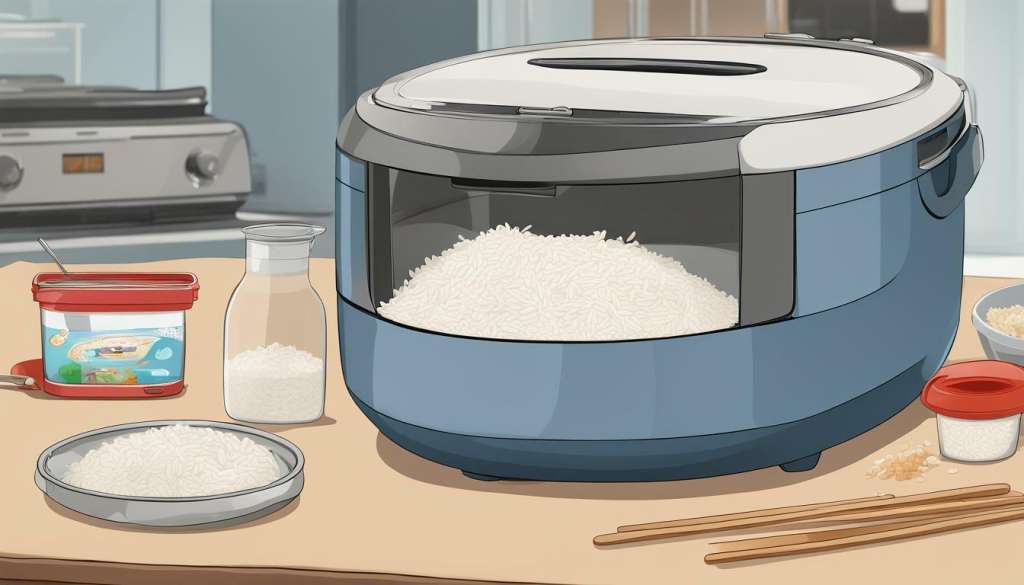
Remember to always follow proper food safety guidelines and waste management practices when using and disposing of rice in a rice cooker.
Conclusion
In conclusion, proper storage of rice in a rice cooker is crucial for maintaining its safety and quality. By following the guidelines and tips provided in this article, you can ensure the freshness and deliciousness of your rice for as long as possible.
Remember to keep an eye on the storage duration of different types of rice, and to follow proper handling and reheating methods when storing cooked rice. Regular maintenance and cleaning of your rice cooker is also important for its efficiency and longevity.
If you notice any signs of spoiled rice, such as changes in texture, color, or odor, it is best to dispose of it properly to reduce food waste and follow safe waste management practices.
With these tips in mind, you can enjoy delicious rice meals with peace of mind, knowing that you are taking steps to maximize the shelf life of your rice in your rice cooker.
FAQ
Q: How long can you keep rice in a rice cooker?
A: The maximum recommended duration for storing rice in a rice cooker depends on various factors. However, it is generally advised to consume rice within 24-48 hours to ensure its safety and quality.
Q: What factors affect the storage duration of rice in a rice cooker?
A: The storage duration of rice in a rice cooker can be influenced by factors such as temperature, moisture, and cleanliness. Proper temperature control and storage techniques can help extend the shelf life of rice.
Q: How can I keep rice fresh in a rice cooker?
A: To maintain the freshness of rice stored in a rice cooker, make sure to store it at a cool temperature, ideally below 40°F (4°C). Additionally, keep the rice cooker clean and free from moisture or contaminants.
Q: Can I store cooked rice in a rice cooker?
A: Yes, you can store cooked rice in a rice cooker. However, it is important to follow proper guidelines for storage duration and reheating methods. It is generally recommended to consume cooked rice within 2-3 days.
Q: What is the maximum recommended storage time for rice in a rice cooker?
A: The maximum recommended storage time for rice in a rice cooker varies depending on the type of rice. White rice can be stored for up to 4-7 days, while brown rice should be consumed within 3-5 days for optimal flavor and safety.
Q: How important is rice cooker maintenance for successful storage?
A: Regular maintenance and cleaning of a rice cooker are crucial for efficient storage. Ensuring the cooker is free from residue and properly maintained will contribute to better rice storage outcomes and prolong the lifespan of the appliance.
Q: How can I identify spoiled rice in a rice cooker?
A: Signs of spoiled rice in a rice cooker include changes in texture, such as clumping or stickiness, off-putting odor, and discoloration. If you notice any of these signs, it is best to discard the rice to avoid potential health risks.
Q: How should I properly dispose of rice in a rice cooker?
A: When disposing of rice in a rice cooker, it is important to reduce food waste and follow proper waste management practices. You can safely dispose of rice by placing it in a compost bin or sealed bag for disposal in accordance with local regulations.


